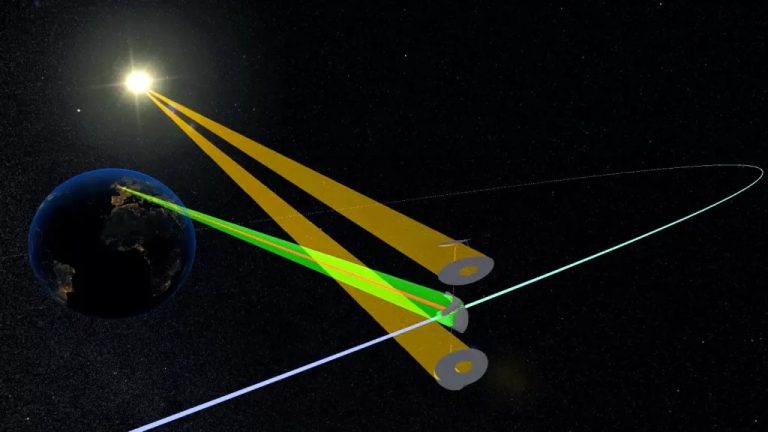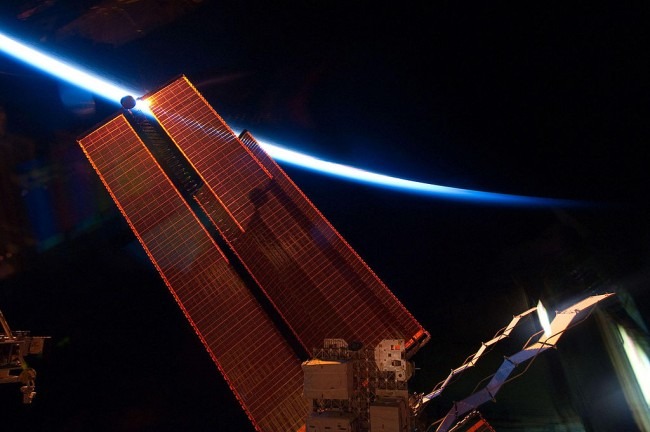
More than 50 British technology organisations, including giants such as aerospace manufacturer Airbus, the University of Cambridge and satellite maker SSTL, have joined the space energy initiative. United Kingdomlaunched last year in an effort to explore options for developing a space solar power plant, Therefore, the UK is taking seriously the idea of transmitting solar power from space and hopes to have a demonstrator in orbit by 2035.
The initiative believes that transmitting electricity from space using the Sun could help the UK achieveZero greenhouse gas emissions target by 2050 More cost-effectively than many existing technologies. A complete stop on carbon emissions by mid-century is part of global efforts against climate change outlined at the UN COP26 summit, which took place in Glasgow in November 2021.
Speaking at the Towards a Space Enabled Net-Zero Earth conference in London, the initiative’s chairman, Martin Soltau, said that all the technology needed to develop a space solar power plant is already in place; The challenge is the scope and size of such a project. The initiative is led by consultancy firm Fraser-Nash and bases its plans on a large engineering study commissioned by the UK government last year. ,The study concluded that it is technically feasible and does not require innovations in the laws of physics, new materials or component technology.Soltau said.
The initiative set off a 12-year development plan that could see a demonstration power plant assembled by robots in orbit transmit gigawatts of energy from space to Earth as early as 2035, Soltau said. The initiative explores a modular concept called CASSIOPeiA (Constant Aperture, Solid-State, Integrated, Orbital Phased Array), developed by the British engineering firm International Electric Company. The modular nature of the power plant in orbit means it can be expanded after the demonstration phase. The demonstrator, however, would also be several kilometers wide, and would require 300 rocket launches the size of SpaceX’s Starship to be brought into orbit, Soltau said. This class a. Will happen 36,000 kms With a continuous view of the Sun and Earth above our planet.
“The main function of the satellite is to collect solar energy through large and light mirrors and to focus the optics on photovoltaic cells, just as we do on Earth. They produce electricity in direct current, which is then converted into solid-state is converted into microwaves by means of radio frequency power amplifiers and transmitted to Earth in a coherent microwave beam”. Soltau explained.

CASSIOPeiA will produce far more electricity than any terrestrial solar power plant of the same size. Compared to a solar panel placed on Earth in the UK, a similar solar panel would be further assembled in space 13 times more energySoltau said. In addition, a space solar power plant would not suffer from the intermittent problem, which affects most renewable energy production on Earth. The sun doesn’t always shine on our planet and the wind doesn’t blow constantly. This means that an alternative power generator or battery accumulator must be present to prevent blackouts in adverse weather conditions. On the other hand, space would provide continuous energy. In addition, there are still no technologies that would make the power system based only on the work of renewable energy on Earth. net zero emissions targetThis would be very difficult and space-based solar power could provide an attractive alternative.Soltau said.
The UK can cover more than 40% of its current electricity needs with renewable energy, but the demand for clean energy is set to triple in the next three decades, according to Soltau, transport and heating infrastructure fossils. run out of fuel. To meet this demand, with offshore wind farms, would require the type of renewable technology currently making the largest contribution to the UK’s energy mix. “A 10 km wide belt of turbines runs around the entire mainland coast of Great Britain”According to Soltau.
The footprint of the terrestrial infrastructure required in orbit for a solar power plant would be very small. To receive energy from space, the system would require a giant terrestrial antenna, nicknamed rectena, The rectena receives microwave radiation sent from space and converts it into electricity in direct current, which is used for high-voltage transmission. ,The rectena is like a large open network with small dipole antennas and should be 7 x 13 kilometers in size. This is huge, but in UK terms it would only take up about 40% of the area of an equivalent solar parkSoltau said.
Speaking at the same conference, Andrew Ross Wilson, an aerospace engineering researcher at the University of Strathclyde in Scotland, agreed that a space solar power plant is a realistic concept. ,The concept has existed since the 1960sThat said, among the challenges of running such a facility is the question of what will happen to the giant facility once it reaches the end of its life cycle. ,We should really try to look at recycling in orbit to move towards a more circular economy”. They said. The public may be concerned about possible radiation from this transmitted electricity, but according to experts the risk is negligible. ,If you were under a ray, your pocket is likely to receive more radiation than your phone.”They said.
Soltau said the plan has received support from the UK government and energy experts: “Space-based solar power is present in the National Space Strategy. and an initial £3 million for the development of some key technologies as part of a zero-emissions innovation portfolio.